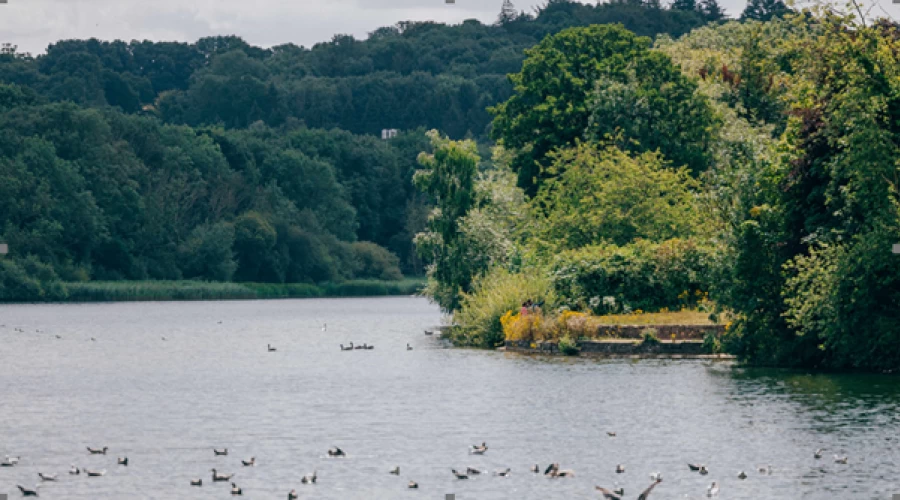Volcanic Eruption
- Risk Level: High
- Risk Ref. #: NRR43
- Likelihood/Impact: 4/3
- Download the Risk Register

Introduction
Thoughts of volcanoes tend to conjure up a big, tall cone shaped ‘mountain’ with orange ‘gunk’ (lava) pouring out of the top and down the sides. In general, this is not wrong, but volcanoes do take a number of shapes and characteristics that differ from this. The two main types of volcanoes are:
- Stratovolcano/Composite (e.g., Mount St Helens) and
- Shield (e.g., Mauna Loa).
Between these types, the characteristics and eruption style will differ greatly with some offering explosions and others fire fountains and lava flows. These will also differ in size and impacts which will greatly depend on their location and geography. Should you be interested to research volcanoes more see these pages:
Types of volcano - British Geological Survey (bgs.ac.uk)
Types of Volcanoes - Volcanoes, Craters & Lava Flows (U.S. National Park Service) (nps.gov)
So, you’re probably thinking what do volcanoes have to do with us in the UK? Well apart from the fact that disasters around the world now have an impact on everyone in some way due to trade, air travel, finance, family/friend ties and disaster aid, volcanic eruptions in nearby countries can cause ash clouds which cover UK airspace.
Interesting facts
Magma and Lava are regularly interchangeable, but they do however mean different things:
- Magma – Molten Rock that is still underground
- Lava – Molten Rock that has broken through the Earth’s surface
Local Risk Rating
Volcanic Eruption is assessed as High risk on our Community Risk Register. Take a look at the table shown in What is Risk? to understand why.
- Impact: Moderate (3)
- Likelihood: Medium High (4)
- Rating: High
What is it?
As explained above, there are many different types of volcanic eruptions and there are countless examples of these throughout history. A few things worth noting are how eruptions are measured – this is done via the Volcanic Explosivity Index (VEI). This is measured between 0 – 8 with 0 being non-explosive and 8 being huge. The criterion for the index roughly follows:
- Eruption cloud height
- Volume of products
- Qualitative observations.
Some examples can be seen below in the image from the Nation Park Service:
Volcanic Explosivity Index - Volcanoes, Craters & Lava Flows (U.S. National Park Service) (nps.gov)
So how do we get volcanic ash in the UK?
Ash clouds very occasionally reach the UK following eruptions elsewhere. In some concentrations of ash, air travel is unsafe therefore all flights are grounded. This causes severe disruption to holidays, the economy and air freight. In general, this is likely to be short lived and only last a number of days, however it does cause some large amounts of annoyance, inconvenience and financial concerns for a number of people/businesses. Ash clouds do lead to far more issues than this – however these tend to be in areas closely located to the eruption. For more information check Human and Environmental Impacts of Volcanic Ash | National Geographic Society
Risk Rating?
You may have got to this point wondering why Volcanoes are rated as ‘High on our Community Risk register. That’s a fair question. Predominantly its due to the disruption the ash clouds cause to air traffic. Your next thought might then be, but there’s no airports in Wiltshire. Again, that’s a good point, but of course with disruption to air traffic, we have a disruption in fright, tourism and business. The knock-on effects of this could be huge.
History
There is one well known eruption to have affected the UK which is Eyjafjallajökull (Iceland) in 2010. This caused a enormous ash cloud which cancelled a large amount of flights to and from Europe – at the time it was the greatest level of disruption to air traffic since WW2. There are lots of stories of passengers stranded abroad with little or no way of returning home. This led to cruise ships, trains and buses flooded with bookings and people desperately searching for any way home. This was an exceptional circumstance for Europe and generally not something we had experienced before.
Related News

Swindon Borough Council - confirmed case of bird flu
>1m read
Swindon Borough Council - confirmed case of bird flu

Food Safety Standards - Bacteria love their turkey undercooked
>1m read
Food Safety Standards - Bacteria love their turkey undercooked
What are we doing about it in the LRF?
There is no LRF plan or regular training and exercising for volcanic eruptions, purely as the likelihood is so low. However, just like with some other risks, we regularly practice our generic procedures and these would be activated should any volcanic ash cause us any problems in the future.
What can you do?
Due to the low likelihood of a volcanic eruption, we do not proactively expect the public to prepare for them. However, what is worthwhile considering is what you might do if you were to get stranded abroad. Some simple things could really help:
- Make sure you have some extra money in case of emergency
- Make sure you have the contact numbers for friends and family at home with you
- Make sure you have a mechanism to contact your employer to explain the situation
Downloads
Volcanic Risk
Volcanic Risk


